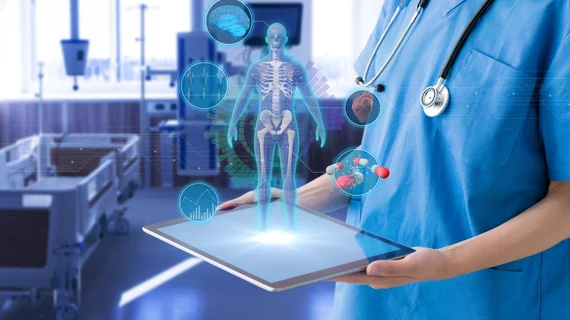Echocardiography and lung ultrasound a helpful combination for assessing pneumonia caused by COVID-19
Clinicians can use echocardiography and lung ultrasound to track disease progression in patients with pneumonia brought on by a COVID-19 infection, according to new findings published in Cardiovascular Ultrasound.
“At present, some reports in the literature describe the combination of pulmonary and cardiac ultrasound to evaluate patients with COVID-19 pneumonia,” wrote co-first authors Jing Han, of Beijing You An Hospital, and Xi Yang, of Wuhan University of Science and Technology, and colleagues. “However, the correlation between pulmonary arterial pressure and lung ultrasound score (LUS) has not been investigated in detail. If these two values are related, the results of one of these investigations may reflect the results of the other, thereby reducing the burden of work in a specific environment.”
The study included data from patients hospitalized with COVID-19 pneumonia at a single facility. In China, the group noted, all patients must be hospitalized for observation after a positive diagnosis, giving researchers a large number of cases to track and study. They originally started with 138 patients, but focused on the 42 patients with evident tricuspid regurgitation within 3 days of admission. The mean hospitalization length was 15 days.
The study’s authors tracked pulmonary artery pressure (PAP) results from daily echocardiography exams and LUS results from daily lung ultrasound exams. Overall, they found a consistent correlation between the two modalities. On day eight, for example, 92.9% of patients had an elevated PAP, and 90.5% had an elevated LUS. At least one of those two values was elevated in all but one case, “improving the accuracy of disease progression evaluation.”
These findings, the group emphasized, show just how closely COVID-19’s impact on a patient’s heart is tied to its impact on that patient’s lungs. This could improve patient care by providing clinicians with a better understanding of just how, exactly, the body reacts to this potentially fatal virus.
“In COVID-19 pneumonia patients, the PAP and LUS are positively correlated,” the authors concluded. “For those who are unable to be transferred or relocated, the PAP may be measured to reflect the degree of lung lesions indirectly. Combining these two parameters could improve the accuracy of lung disease progression assessment, providing an important guiding role for treatment decisions.”
The full study is available here.

